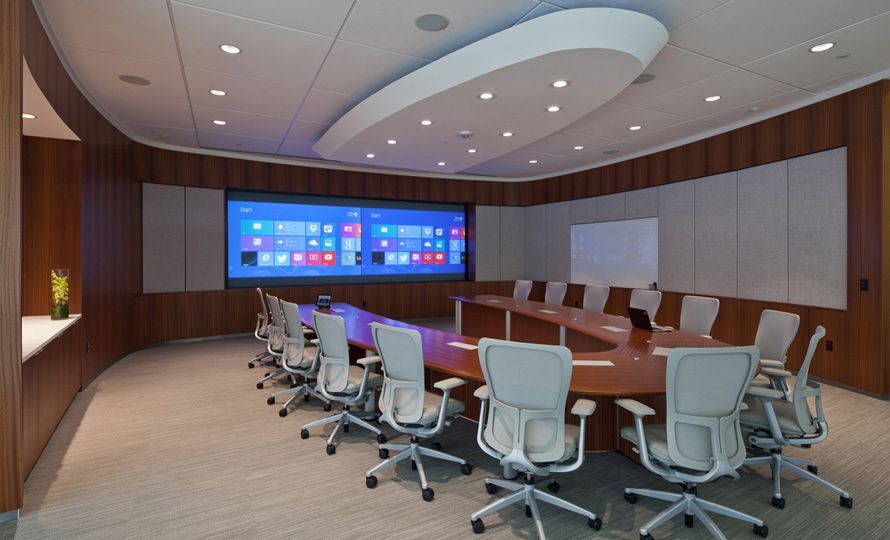Technology has undeniably transformed the way businesses operate in the modern world. From improving productivity to enhancing collaboration, the advancements in technology have revolutionized every aspect of the corporate landscape. One area where technology has made a significant impact is in meeting rooms.
1. The Changing Landscape of Meeting Rooms
Gone are the days of traditional meeting rooms equipped with a whiteboard, flipchart, and projector. Today, tech-enabled meeting rooms offer a seamless and integrated experience that empowers teams to communicate, collaborate, and present in a more efficient and engaging manner.
1.1 Interactive Displays
The centerpiece of a tech-enabled meeting room is often an interactive display. These displays combine touch-screen functionality with state-of-the-art resolution, allowing participants to interact with digital content effortlessly. Whether it’s brainstorming ideas, sharing presentations, or reviewing documents, the interactive display serves as a dynamic platform for communication.
1.2 Video Conferencing
Tech-enabled meeting rooms also incorporate high-definition video conferencing systems, enabling remote teams or clients to participate in meetings as if they were physically present. The seamless integration of audio and video ensures face-to-face interactions, fostering better collaboration regardless of geographical boundaries.
2. Enhancing Collaboration
By leveraging technology, meeting rooms have become hubs for enhanced collaboration and productivity. With digital whiteboards and annotation tools available on interactive displays, team members can ideate in real-time, directly on the content being displayed. This level of interactivity encourages active participation and ensures that ideas are heard and incorporated.
2.1 Screen Sharing
Tech-enabled meeting rooms enable presenters to share their screens effortlessly. This allows participants to view and interact with shared content from their own devices, creating a truly engaging and inclusive environment. Be it demonstrating software, showcasing data, or presenting slides, screen sharing simplifies the sharing process and ensures a seamless experience for all attendees.
2.2 Collaborative Note-Taking
With the aid of tech tools, team members can take collaborative notes during meetings. Platforms like Google Docs or Microsoft OneNote facilitate real-time note-taking, promoting information sharing and reducing the risk of miscommunication. This fosters a more productive atmosphere, ensuring that everyone is on the same page and aligned towards the meeting’s objectives.
3. Smart Automation and Integration
A tech-enabled meeting room is not limited to just interactive displays and video conferencing systems. Smart automation and integration play a significant role in streamlining the overall meeting experience.
3.1 Seamless Room Booking and Scheduling
Integrated software solutions allow team members to easily book and schedule meeting rooms based on real-time availability. With an intuitive user interface, employees can quickly identify and reserve the most suitable meeting space for their needs, eliminating unnecessary conflicts and time wastage.
3.2 Intelligent Lighting and Climate Control
Tech-enabled meeting rooms often incorporate intelligent lighting and climate control systems. These systems can detect occupancy and adjust lighting and temperature accordingly, creating a comfortable and energy-efficient environment. This not only enhances the overall user experience but also contributes to sustainability efforts.
3.3 Integration with Productivity Tools
Integrating meeting room technology with existing productivity tools like email clients, calendar applications, and project management software further streamlines workflows. Employees can effortlessly send meeting invites, access relevant documents, and even assign tasks directly from the meeting room interface, enhancing efficiency and reducing administrative overhead.
4. The Future of Meeting Rooms
As technology continues to evolve, we can expect meeting rooms to become even more sophisticated and intuitive. Artificial intelligence (AI) capabilities, voice recognition, and augmented reality (AR) are some of the technologies that hold immense potential in shaping the future of tech-enabled meeting rooms.
The integration of AI algorithms can offer personalized meeting experiences by adapting to individual preferences and automating routine tasks. Voice recognition can enable voice-controlled commands, making it even more convenient to manage meetings and access information. AR technologies can transform presentations by allowing participants to visualize data in virtual 3D models, fostering unparalleled engagement and understanding.
In conclusion, tech-enabled meeting rooms have revolutionized the way we collaborate and communicate within organizations. With interactive displays, video conferencing, and integrated automation, these modern spaces enhance productivity, facilitate seamless collaboration, and provide an immersive meeting experience. As technology advances, the future of meeting rooms holds even more exciting possibilities, propelling businesses towards greater efficiency and success.

